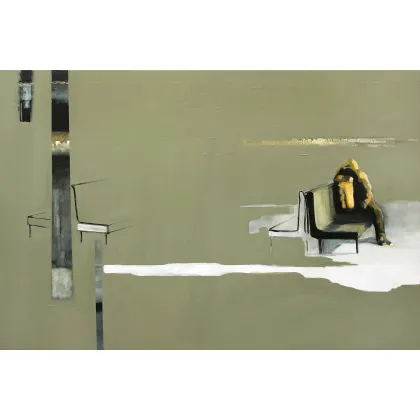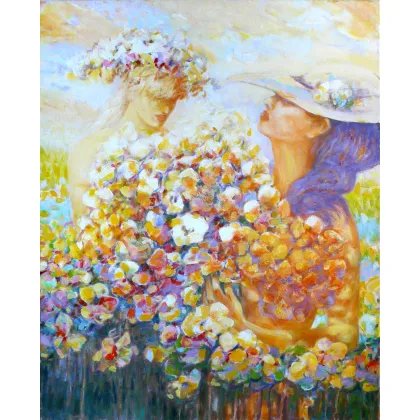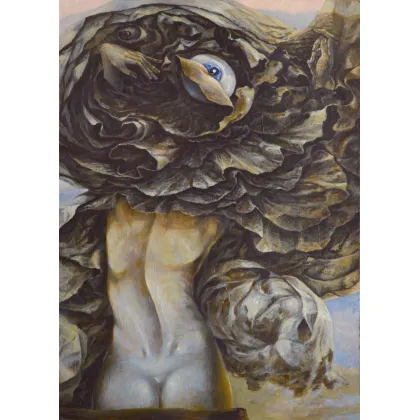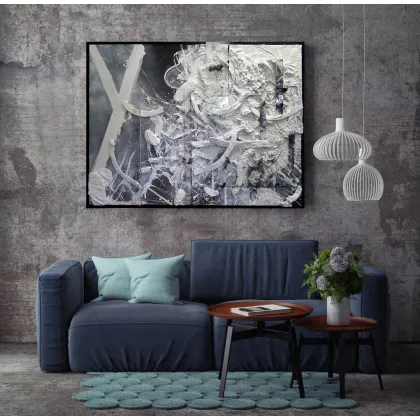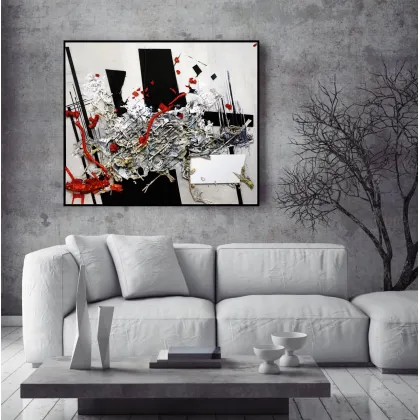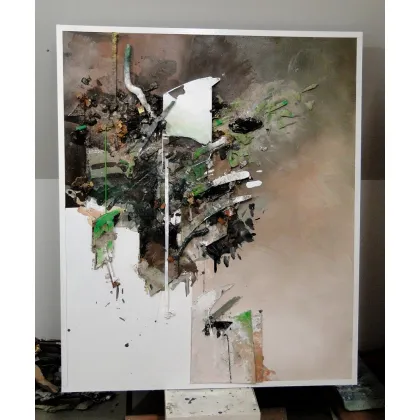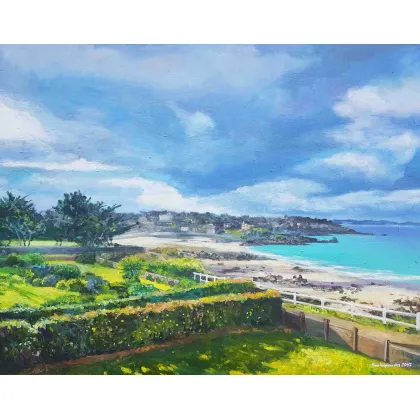Acrylic paintings
-
On the Sidewalk - oil/acrylic-canvas 120x120 cm
€1,301.00 -
Portal K - oil / acrylic-canvas 150x120 cm
€1,301.00 -
On the platform - oil / acrylic-canvas 120x80 cm
€1,277.00 -
Contemporary painting on canvas.Author: Krzysztof Trzaska
€2,365.00 -
Contemporary painting on canvas. Author: Krzysztof Trzaska
€2,365.00 -
Contemporary painting on canvas.Author: Krzysztof Trzaska
€2,365.00 -
Contemporary painting on canvas.Author: Krzysztof Trzaska
€2,365.00 -
Contemporary painting on canvas.Author: Krzysztof Trzaska
€2,365.00 -
Contemporary painting on canvas.Author: Krzysztof Trzaska
€2,365.00 -
Contemporary painting, framed artwork. Author: Krzysztof Trzaska
€355.00 -
Contemporary painting, diptych, 2 paintings. Author: Krzysztof Trzaska
€946.00 -
Image from Galeria Autorska
€946.00 -
Fantasy, magic realism and a fairy tale on canvas enchanted. Acrylic painting on cotton canvas. The work does not require a framework, but it is an individual matter for the buyer. Work varnished with
€946.00 -
Fantasy, magic realism and a fairy tale on canvas enchanted. Acrylic painting on cotton canvas. The work does not require a framework, but it is an individual matter for the buyer. Work varnished with
€946.00 -
Fantasy, magic realism and a fairy tale on canvas enchanted. Acrylic painting on cotton canvas. The work does not require a framework, but it is an individual matter for the buyer. Work varnished with
€946.00 -
Fantasy, magic realism enchanted on canvas. Acrylic painting on cotton canvas. The work does not require a framework, but it is an individual matter for the buyer. Work varnished with semi-gloss varni
€2,809.00 -
Image from Galeria Autorska
€2,809.00 -
Spatial composition in white tones. The variety of small relief forms used is surprising with shapes. Unexpected compositional solutions allow for multiple interpretations.Weight approx. 10 kg Picture
€3,075.00 -
A spacious, relief abstract composition based on a range of blues, navy blue and white. The unusual arrangement of construction elements allows for multiple interpretations leading to the world of the
€2,956.00 -
A spacious, abstract composition in blue and white tones. The elements floating in space seem to be moving, introducing a mood of lightness.
€2,602.00 -
Spatial composition, very expressive, with a dominance of red. The way of spatial treatment of painting material introduces us to the inner world of the author's emotions. The worlds hidden there allo
€2,956.00 -
A spatial composition reminiscent of fragments of widely understood Nature. Beiges, browns and greens arranged in a certain symmetry refer to the matter of inanimate nature fascinating with its shapes
€2,956.00 -
Fantasy, magical realism and a fairy tale tale enchanted in the picture. Acrylic painting on board framed in a wooden frame. Work varnished with semi-gloss varnish. The image is signed on the back by
€1,035.00 -
"View from my balcony in Brittany"
€1,892.00
Acrylic paintings are a great and original addition to interiors
Acrylic painting appeared quite recently in the history of art. It was closely linked to the industrial revolution, technological progress, and broadly understood modernism. This technique emerged in the 1920s. Acrylic paints, based on resin polymers, were created as a cheap and durable alternative to oil paints. They were used by representatives of art movements such as Fauvism, Surrealism, and Dadaism. Since then, many painters have eagerly turned to this type of art supplies.
To this day, debates continue among artists, historians, and art critics about the superiority of oil painting over acrylic and vice versa. Each of these methods undoubtedly has a range of advantages and disadvantages. Acrylic allows painting on almost any surface (except PVC, which requires a primer). The paints have very saturated colors, are well-pigmented, and durable. Moreover, depending on the type of resin used in production, they have different consistencies, which significantly expands the artist's technical possibilities.
We have at our disposal: paints in tubes or cans - quite fluid, in spray form, and thick gels, known as heavy body. Different densities allow the use of painting tools such as synthetic and natural bristle brushes, sponges for dabbing, and palette knives. Therefore, acrylic paintings require significant skills from the artist.
Acrylic painting is in vogue today
Further industrial development has allowed for an even greater range of artistic techniques within acrylics. Since these are fast-drying paints, drying retarders began to be used to facilitate the process of shading and blending colors. The market saw the introduction of structural pastes, snow effects, aging waxes, single and two-component varnishes for creating cracks, and even rust effect preparations. All of this further expanded the creative possibilities for painters. New structures and textures of acrylic painting surfaces emerged.
The wide range of artistic techniques based on acrylic makes more and more painters choose this artistic path. Among those who engage in it are: Krzysztof Trzaska, Małgorzata Bańkowska, Tadeusz Baranowski, Agnieszka Osak.
How to store an acrylic painting?
When hanging, we recommend maintaining a gap between the wall and the back of the painting to allow natural air circulation. Above all, avoid exposure to harsh sunlight, which can cause colors to fade and even change the paint's structure. It's better not to hang paintings in places where there is a heat source, such as above a fireplace. For framed paintings without glass, remember that cigarette smoke is an enemy of art.
Keeping artworks clean can be quite a challenge. A framed painting with glass is the easiest to clean. Simply wipe the glass and frame with a cloth dampened with warm water. Acrylic paintings not protected by any glass are much more difficult to maintain. They need to be gently wiped or dusted. If anything starts to happen to the surface coating, do not attempt to conserve it on your own, but hand it over to professionals specializing in conservation and restoration. This will help avoid further damage and allow you to enjoy art in the comfort of your home for many years.



